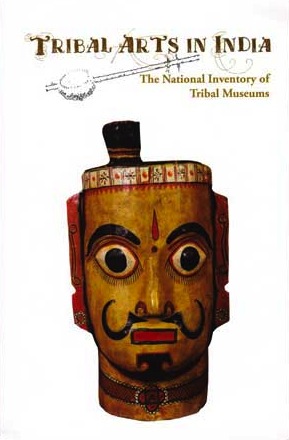
More about the Bhil and Bhilala communities >>
Pithora arts and crafts | Textile >>
Be it the depiction of countryside, weddings, festivals or celebrations – Pithora art, made by tribals of Aadharkaanch in Alirajpur district of Madhya Pradesh, celebrates different realities of rural living.
The paintings are usually canvased on cloth, paper, card boards and walls with natural and synthetic colors. Traditionally, Pithora like every other form of painting originated on the walls of tribal households.
Wall paintings till date remain one of the most common forms of creative expression, and makes for traditional home décor that has religious importance to the Bhilalas.
Warli, Pithora, Mandana – tribals in India engage in various art forms to adorn their homes during festivals, and more recently also with an objective of diversifying their incomes.
Historically derived from cave, wall and rock paintings, this art is heavily inspired from Gujarat, has religious and mythological relevance to indigenous tribes of Madhya Pradesh which has slowly transformed into a vibrant occupation of the Bhilalas or Rathwas.
How the paintings are made […]
An important feature of authentic Pithora art is that no two paintings are ever similar and artists take care of this ‘unique selling point’ of their skill with utmost precision. Every artist leaves a distinct mark on each of his paintings to signify his intellectual and creative rights over the murals, thereby making each and every painting unique in its own way by using different color combinations, floral patterns, and symmetry in murals. […]
The authentic portrayal of village and tribal life is done ecstatically to present hardship and occasional festivity, thus underscoring the co-existence of hope and despair in tribal lives, through depiction of daily chores and celebrations at the same time, making a painting complete. […]
Devi Singh, 32 belonging to the Bhilala tribe, and inhabiting the Dehrikheda village in Kathiwada block of Alirajpur depicts tribal folklore through Pithora works. Having received various trainings from Hastashilp Evam Hathkargha Vikas Nigam – a Government of Madhya Pradesh undertaking, Devi Singh and other artisans have now become master trainers of this exotic art originating from the hinterlands of India. Each painting without frames is priced at Rs 500- 600, and prices vary depending on the socio-economic context of markets. Realizing the livelihood advantage associated with Pithora art, Singh and his family now practice this art form on floor, paper, walls, cloth, canvas and wood. During weddings in the village, classic derivations of Pithora work as wall décor with mud and white paints is seen vividly in homes. […]
Artists through this traditional occupation, carry forward a rich tribal lineage of the Bhilalas, and therefore contribute to indigenous knowledge and market capital by creating platforms of accessibility and entrepreneurship in these regions which are usually marred by infrastructural and market constraints. […]
Swasti Pachauri is a social sector consultant currently working as a Prime Minister’s Rural Development Fellow in Seoni district of Madhya Pradesh, India. Views expressed in the article are personal.
Source: “Pithora art depicts different hues of tribal life” by Swasti Pachauri , Indian Express, 26 June 2014
Address : https://indianexpress.com/article/lifestyle/pithora-art-depicts-different-hues-of-tribal-life/
Date Visited: 1 February 2021
[Bold typeface added above for emphasis]

Read or download titles for free (eBooks & Magazine) >>
Learn more
Central region – Central Zonal Council
Crafts and visual arts | Masks
eBook | Adivasi Stories from Gujarat
eBook | Background guide for education
Tips for using interactive maps
Toggle to normal view (from reader view) should the interactive map not be displayed by your tablet, smartphone or pc browser
For details and hyperlinks click on the rectangular button (left on the map’s header)
Scroll and click on one of the markers for information of special interest
Explore India’s tribal cultural heritage with the help of another interactive map >>